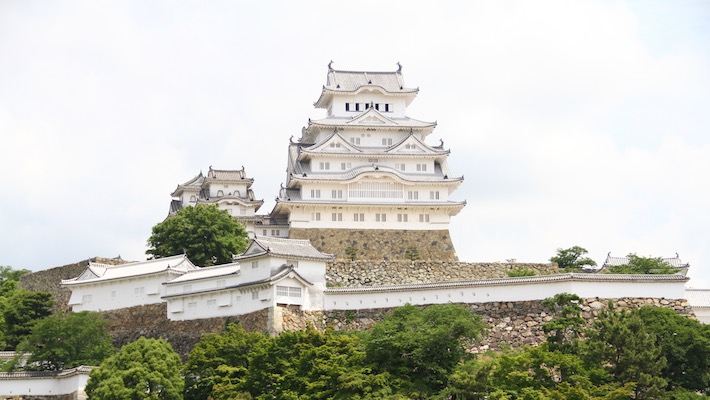
Harima Archives
2022.03.18 Remnants of Breweries at Himeji Castle

Himeji in the Edo Period
The site of Himeji Castle is at the very heart of downtown Himeji today. Excavation and research on the site, which contains the remnants of a previous castle and buildings, has led to the discovery of an astonishing 445 government-recognized Buried Cultural Properties at the time of writing. The castle’s main keep, now a Japanese National Treasure, lies at the center of Himeji, surrounded by spiraling moats. A castle town once sat within the inner, central, and outer canals during the Edo period, and remnants of its samurai residences, merchant townhouses, stores, temples, and other buildings have been found today. Among them were several traces indicative of thriving sake-brewing trade.
Brewing Signs Found in Merchant Townhouses
Remains of sizeable traditional kamado stoves, used for steaming food such as rice and soybeans, have been found at the merchant townhouses between Himeji’s central and outer moats. It is believed likely that people used them for brewing. This alone does not indicate what was brewed, as the same process can make all sorts, from miso to soy sauce. Yet according to Himeji Castle’s few remaining documents from the time, the only ones who used both these large stoves and the pits found near them were sake breweries. Moreover, evidence of wells at many houses suggests that Himeji had access to an abundant supply of water, which is essential for brewing sake.
75 Breweries, as Prevalent as Tofu Stores in Japan Today
Himeji Castle documents note that there were 75 sake breweries in the area circa 1666. With no known record of broader distribution of it outside of Himeji Domain, it is presumed that their sake was made and consumed locally. Though it may seem that Himeji residents were avid drinkers, these brewery numbers were typical for small- to medium-sized towns and cities at the time. They are not thought to have been the significant kind of building that the word “brewery” brings to mind either but in one section of the merchants’ townhouses where both brewing and sales took place instead. These were likely dotted throughout the area, just like the little tofu stores prevalent in Japan today.
Large-Scale Brewing in Nada, Small-Scale in Himeji
From those 75 breweries in the early Edo period, numbers in Himeji dropped rapidly to 31 in 1733 and down further to eight by 1759. One possible reason is the impact of sake breweries in the nearby regions of Itami and Nada. Nada’s breweries were working very much on a factory scale with a separate koji room and equipment such as kamado stoves and pressing pits arranged into their distinct areas. Meanwhile, with brewers pushing sake right by the hot stove, these confined workspaces within residential townhouses made Himeji’s unique in their way. From this, we can say that sake brewing has been a significant industry in Nada and Itami since back then, while it was a smaller-scale one for Himeji.
Sake Brewing Spreads to the Outskirts
Himeji’s sake industry spread from the castle town to its outskirts towards the end of the Edo period, with the number of breweries run from rural houses increasing. Tsubosaka Sake Brewery, one of Himeji’s oldest, was established some distance away in the former district of Kanzaki in 1805. That Tsubosaka began business outside of town shows the sake-producing region had expanded by then. It is worth noting that only those provisioned a sake brewing permit by the shogunate government during the Edo period were allowed to do so. The amount of rice collected as annual tax determined how much sake brewers could make, influencing the industry. Records show that Himeji had 175 brewery permits, though whether they were all operating or not remains a mystery.



